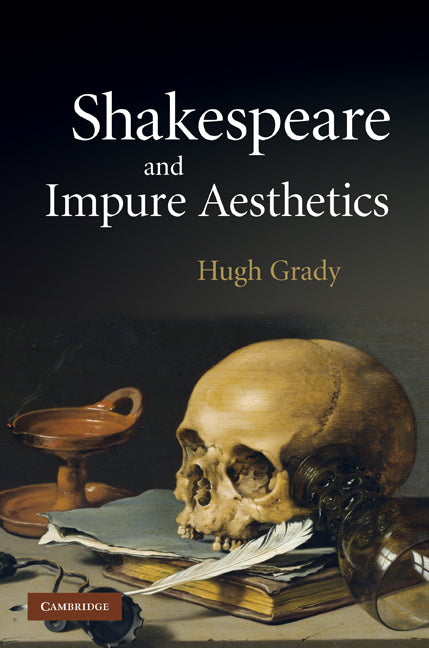Freshly Printed - allow 4 days lead
Couldn't load pickup availability
Shakespeare and Impure Aesthetics
This book examines Shakespeare's plays and defines specific Shakespearean aesthetic practices in his use of desire, death and mourning.
Hugh Grady (Author)
9780521514750, Cambridge University Press
Hardback, published 13 August 2009
272 pages
23.5 x 15.8 x 2 cm, 0.57 kg
"...Grady continues his important project of investigating the formation of modern subjectivity in Shakespeare. This time it is in relation to aesthetics - a subject...Recommended"
-A.DiMatteo, New York Institute of Technology
Shakespeare and Impure Aesthetics explores ideas about art implicit in Shakespeare's plays and defines specific Shakespearean aesthetic practices in his use of desire, death and mourning as resources for art. Hugh Grady draws on a tradition of aesthetic theorists who understand art as always formed in a specific historical moment but as also distanced from its context through its form and Utopian projections. Grady sees A Midsummer Night's Dream, Timon of Athens, Hamlet, and Romeo and Juliet as displaying these qualities, showing aesthetic theory's usefulness for close readings of the plays. The book argues that such social-minded 'impure aesthetics' can revitalize the political impulses of the new historicism while opening up a new aesthetic dimension in the current discussion of Shakespeare.
Acknowledgements
1. Introduction: impure aesthetics
Part I. A Shakespearean Aesthetic: Into the Woods outside Athens: 2. A Midsummer Night's Dream - eros and the aesthetic
3. Modernity, usury, and art in Timon of Athens
Part II. The Aesthetics of Death and Mourning: 4. Hamlet as mourning play
5. Beautiful death in Romeo and Juliet
Conclusion: the critical present
Bibliography
Index.
Subject Areas: Shakespeare studies & criticism [DSGS], Literary studies: c 1500 to c 1800 [DSBD], Literary studies: general [DSB]


